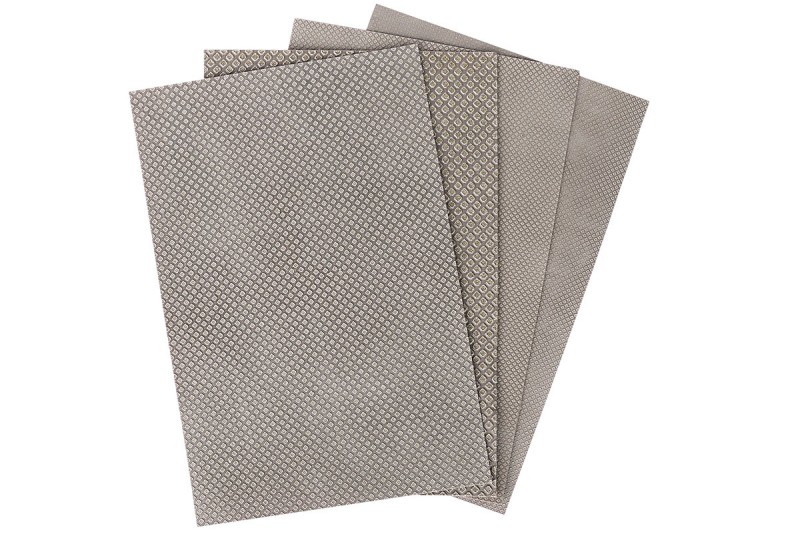Tile Polishing Method
There are several ways to polish ceramic tiles, each with its own advantages and disadvantages:
1. Hand polishing:
Description: This method involves manually sanding the tile surface using sandpaper or abrasive discs.
Benefits: Manual polishing allows for precise control of surface smoothness, making it ideal for small areas or intricate designs.
Disadvantages: This is a slow process and can be labor intensive, making it less suitable for large areas.
2. Machine polishing:
Description: This method uses equipment such as a high-speed polisher or electric sander to quickly polish the surface of the tile.
Advantage: Machine polishing is highly efficient and can cover large areas in a short time.
Disadvantages: Proper technique is required to avoid damaging the tile surface, especially delicate materials like matte tiles.
3. Engraving machine polishing:
Description: This advanced method uses a high-speed rotating carbide cutting head to polish the surface of the tile.
Advantage: The engraving machine can quickly achieve a high level of polish and is suitable for professional tile processing.
Disadvantages: This method is costly and may not be necessary for standard home improvement projects.
The impact of polishing machines on matte tiles
Matte tile has a richly textured surface, giving it a unique aesthetic. However, this rough texture can present challenges when polishing. Here are some key considerations:
Risk of damage: The high-speed spinning disc of the polishing machine may leave tiny scratches on the matte surface of the tile. These scratches will affect the overall appearance of the tile, making the surface appear dull or uneven.
Surface alteration: Polishing machines are designed to create a smooth, shiny surface. While this is ideal for glossy tiles, it can alter the matte finish of matte tiles, causing an unexpected change in texture and appearance.
Tips for polishing matte tiles
Considering the potential risks of using a polishing machine to polish matte tiles, it is recommended to consider other methods:
Hand polishing: If you wish to maintain a matte finish while enhancing the surface smoothness, hand polishing is the safest option. Using fine sandpaper or a soft abrasive pad provides greater control over the polish and minimizes the risk of damage.
Engraver: If you want a more professional polish, consider using an engraver. This method creates a polished finish without the risks associated with traditional polishing machines. However, it’s best to leave this process to an experienced professional.
Test first: If you decide to use a polishing machine, always test it on a small, inconspicuous area of the tile first. This will help you assess the machine’s effect on the matte finish and determine if it’s suitable for the entire surface.
Precautions for Using Polished Tiles
1. Clean the tile surface before polishing
Before you begin polishing, it’s crucial to thoroughly clean the tile surface. Dust, dirt, and debris can interfere with the polishing process, resulting in poor results. Clean the tile with a mild detergent and water, and ensure it’s completely dry before proceeding. This step not only prepares the tile for polishing but also prevents dirt from getting trapped under the polishing pad and causing scratches.
2. Avoid excessive pressure when polishing
One of the most common mistakes when using a polisher is applying too much pressure. Applying too much pressure can cause scratches, chips, or peeling on the tile surface, especially on softer tiles. Instead, apply the polisher gently. This method helps maintain the integrity of the tile while achieving a smooth, polished finish.
3. Clean the tile surface after polishing
After polishing, be sure to clean the tile surface again. Any remaining sanding dust and dirt can dull the tile’s shine and affect its overall appearance. Wipe the tile with a damp cloth or mop to ensure all polish residue is removed. This final cleaning step will enhance the tile’s shine and keep it looking its best.
4. Ensure compatibility of protective agents
If you plan to use a protectant or surface treatment after polishing, make sure it is compatible with the tile surface. Some products may contain chemicals that can damage the tile surface or change its appearance. Always read the manufacturer’s instructions and, if possible, test the product on a small, inconspicuous area before applying it to the entire surface.
In Conclusion
Polishing tile can transform a space, but achieving and maintaining that polish requires meticulous attention to detail. While polishing machines can be quick, they aren’t suitable for all tile types, especially matte finishes, which may require more delicate work. Following these precautions—cleaning the tile surface before and after polishing, avoiding excessive pressure, and ensuring compatibility with protectants—can help achieve a beautiful, long-lasting polish. Whether you choose to polish by hand or machine, paying attention to these details will help ensure a polished finish and enhance the aesthetics of your tile surface.
Post time: Oct-24-2025

